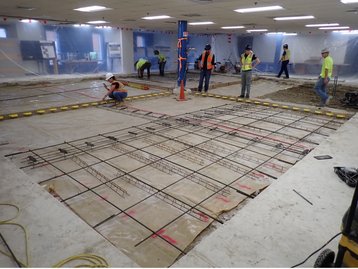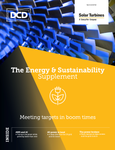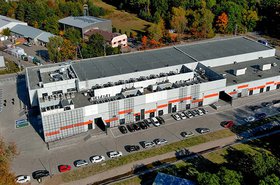The Open Compute Project Foundation (OCP) has announced a new collaboration with several hyperscale companies to test developing and deploying low-embodied carbon concrete, or “green concrete.”
Google, AWS, Meta, and Microsoft are some of the companies participating in the project to drive the adoption of green concrete in data center construction.
The initiative is in line with an open letter written by the Climate Accord to advocate for the use of “green concrete” in the industry.
Engineering and construction firm Wiss, Janney, Elstner Associates Inc. (WJE) researched the application of low-carbon concrete as part of the project. Further testing is yet to take place before results are compiled into a conclusive whitepaper.
Current results from WJE have shown that the lowest carbon mixture achieved a greater than 50 percent reduction in carbon impact in comparison to today’s typical concrete.
Conventional concrete uses limestone, which is typically heated with clay to around 2,650°F (1,454°C) in a kiln. This generates CO2 directly, and the kiln itself is normally fired by coal or gas, creating even more CO2.
Green concrete is formulated using supplementary cementitious materials and alternative cement derived from raw materials.
There are numerous existing technologies for producing low-carbon concrete, but adoption has not yet scaled across the supply chain.
“Low-embodied carbon concrete represents a significant advancement in environmentally responsible building practices. By reducing the carbon footprint associated with concrete production, we can make a tangible impact in mitigating the data center industry's environmental impact. This demonstration will provide valuable insights into the performance and viability of low-embodied carbon concrete, paving the way for its widespread adoption throughout the industry,” said George Tchaparian, CEO at OCP.
Chris Walker, director of sustainability at AWS, said: “Traditional cement used in concrete is a large source of carbon emissions, but these projects show cement substitutes can be used to lower emissions without compromising the construction and durability of concrete. In 2023, we built 36 data centers with lower-carbon concrete, and we’ll continue working across our supply chain to drive its adoption.”
In 2023, Microsoft tested lower-carbon concrete mixes in construction projects in Quincy, Washington. The tech giant has promised to be carbon-negative by 2030 and has also looked into using other low-carbon building materials, including wood, earth, hemp, and mushrooms.
Previously. Microsoft has tested conventional concrete with added CO2, and invested in the product's maker CarbonCure. The added CO2 in CarbonCure's mix makes the concrete stronger, but only balances a small fraction of the CO2 emitted in producing the cement involved.
Amazon has also invested in CarbonCure and tried another green concrete mix from Holcim. In its most recent ESG report, Amazon said it built 36 data centers with lower-carbon concrete in 2023, up from 16 in 2022. AWS also tested a low-carbon, performance-based ASTM C1157 Hydraulic Cement by concrete supplier Ozinga, which it said achieved a 64 percent reduction in embodied carbon compared to ‘the industry average.’
Meta has also previously trialed low-carbon cement initiatives.






